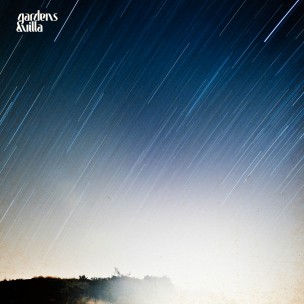
c/o zecatalist.com
The flute is back, the synth is smooth, and the retro ’80s sound is in full force. The Santa Barbarian product has preserved some of the tone of its self-titled first album, and yet something is off. Similar to going to your favorite band’s concert only to realize that they are not quite the same live, Gardens & Villa’s Dunes seems to lose the flair of the band’s previous endeavor.
What has changed, a humble listener might ask? Well, let us start with the flute. Where did it go? The airy instrument was a staple of Gardens & Villa’s first, self-titled album. In songs such as “Orange Blossom” and “Sunday Morning,” the flute adds a little something something to songs that would otherwise be lacking any panache. However, the flute is oddly absent from a large portion of Dunes. The lone song that noticeably emphasizes the instrument, “Domino,” seems contrived.
Gardens & Villa replaced the light, airy feeling of its first album with a cleaner product. This is most noticeable in the vocals of Chris Lynch. No longer is Lynch’s voice characterized by a grainy airy quality. The falsetto is still there, but the cleanness of the recording takes away its impact. In some cases, the new sound does work wonders, but at other times it is simply too polished.
Following “Domino,” “Colony Glen” is a strong showing of the funkier synth that characterized Gardens & Villa’s past songs. The song just screams ’80s; the lightness of the chorus contrasts nicely with the heavier beat of the verses and lifts the mood of listeners.
As good as “Colony Glen” is, “Bullet Train” and “Chrysanthemums” highlight the failings of Lynch’s new, cleaner falsetto. “Bullet Train” is the better of the two, using a good hook in the chorus to offset the misuse of falsetto throughout the verses. “Chrysanthemums” is the only noticeable flop of the album. The song sounds as if the band was testing a new style, perhaps attempting to emulate the falsetto of Passion Pit’s Michael Angelakos. However, its members obviously lack the same level of execution to create a proper song around the vocals.
Where in “Chrysanthemums” the band seemed out of its element, it definitely gets right back into its groove with “Echosassy.” It is arguably the best song on Dunes and creates an upbeat and wavy synth that produces a real, visceral reaction. Combining that with a simple and bubbly keyboard, the song recaptures listeners’ attention and prepares them for the second half of the album.
“Purple Mesas” follows as a well-executed contrast to “Echosassy”’s quick pace. The song slows down the album, creating a dreamy vibe. The slight breakdown near the end is one of the best moments of the album. In the subsequent song “Avalanche,” Gardens & Villa attempts to follow the same formula of “Colony Glen.” The track does accomplish the feat of awakening listeners, with an insistent beat and penetrating synth notes, and is definitely a good driving song.
The last three songs, “Minnesota,” “Thunder Glove,” and “Love Theme,” all slow down the album once again. In particular, “Minnesota” is definitely the album’s attempt at a ballad, using soft falsetto lyrics, short staccato piano chords, and a distinctly sad guitar. The penultimate piece, “Thunder Glove,” is reminiscent of “Star Fire Power,” from Gardens & Villa’s first album, successfully replicating the same build-up again and again in the song without going stale. The last track of the Dunes, “Love Track,” is a short, melancholy outro track; running at just 85 seconds, it is almost an empty audio file. The song is exclusively a quiet melancholy synth that provides a handful of sounds.
Gardens & Villa’s Dunes is emblematic of the sophomore slump. In changing its sound, it lost the summery, funky, unpolished sound that made the band refreshing to listen to. However, Dunes is still full of songs that deserve to be heard. From “Colony Glen” and “Echosassy” to “Thunder Glove,” the talent of Gardens & Villa is still present, and hopefully its third project will take that talent even further.
Comments are closed